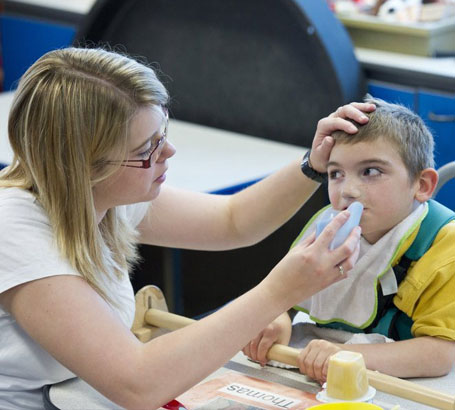Rights, duties and procedures
What can you expect to learn?
The detailed learning outcomes covered in the introduction for the module are shown
in the table on this slide.
In broad brush terms, the learning outcomes for the Legislative Context materials
identify and trace three important aspects of work associated with children with
PMLD, SLD, and CLDD that are underpinned and secured by the legislation.
| Rights | What are children entitled to? |
| Duties | Who should do what; what powers of authority help people to carry out tasks? |
| Procedures | How are rights and duties woven together? |
![A legal contract having just been
signed]](img/m02p010c/contract_2008_01.jpg)
As recently as forty years ago, SLD
children were not automatically entitled to education and were often considered incapable
of being educated – sometimes described as ‘ineducable’. That is
certainly not the case now.
Since 1971, legal safeguards have ensured that all children have a more equal chance
of benefiting from education. In that year for the first time, the Education (Handicapped Children) Act 1970 granted all children
of compulsory school age the right to an education. This entitlement continues to
this day under the Education Act 1996.
Legislation has not only provided the critical checks and balances needed to progress
equal rights. It has also helped to drive the overall direction of policy and set
the threshold beyond which we, as a society, agree that provision will not fall.

Theory and practice
Practice does not always live up to the aspirations of legislators. Each round of
reform leaves the debris of practices, procedures and pedagogy, and even buildings,
which speak of the values and aspirations of the time.
The extent to which aims can be realised and the ways in which the legislative provision
supports, or occasionally even gets in the way of the very thing it is intended to
promote, is one of the reasons why it is so important to study the legislative context.
next?

New ideas, and occasionally returns to previous notions, continue to stimulate debate around best practice to meet the needs of children with SEN and/or disabilities.
The Green Paper Support and aspiration: A new approach to special educational needs and disability published in 2010 with a plan to legislate in 2012 is the most recent part of the story of improvement.

The changes proposed by the Green Paper Support and Aspiration include efforts to overcome the following weaknesses in the current system:
- support is too difficult to access
- too many assessments are involved
- costly appeals processes
- lack of voice for children
- insufficient training and support for teachers

Read the Green Paper on SEN: Support and Aspiration:
A New Approach to Special Educational Needs and Disability (2011).
How will the changes proposed in the Green Paper affect practice in your school/setting?
What will be the benefits for children with SLD,
PMLD or CLDD and their families?
In your view, will any of the proposed changes introduce additional barriers to learning,
achievement or well-being for children with SLD,
PMLD or CLDD?